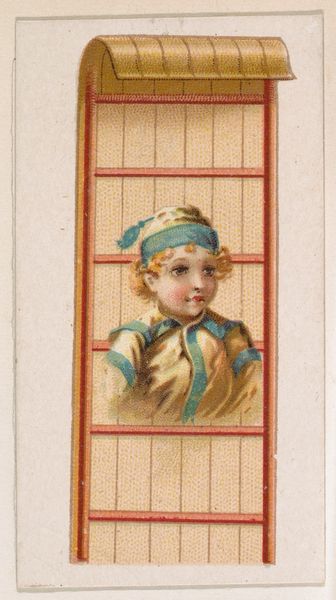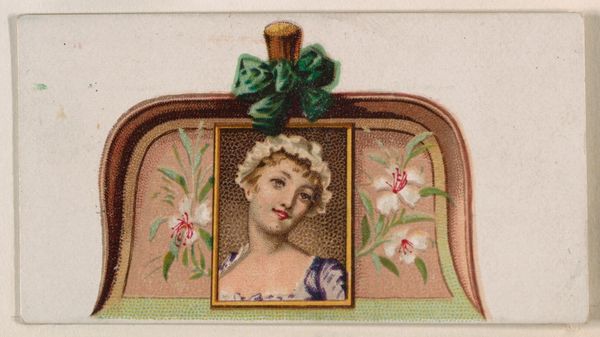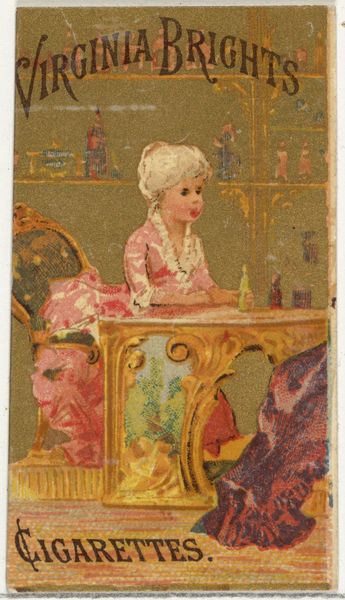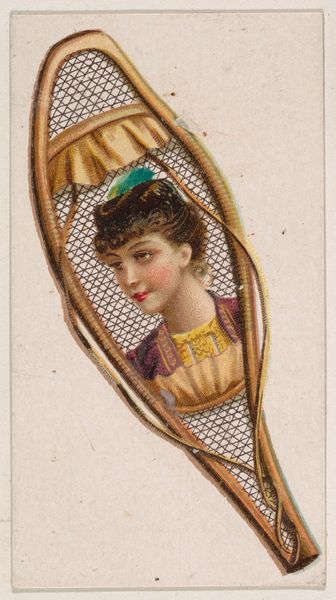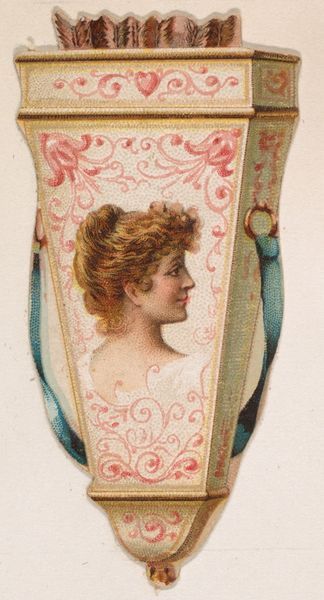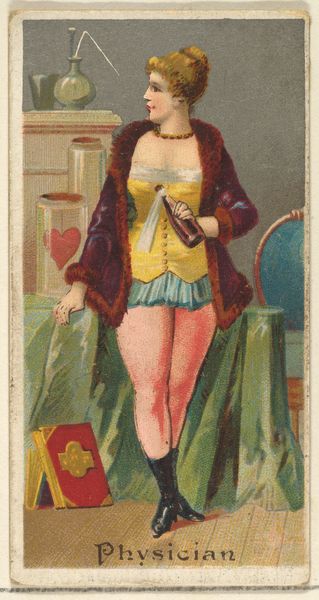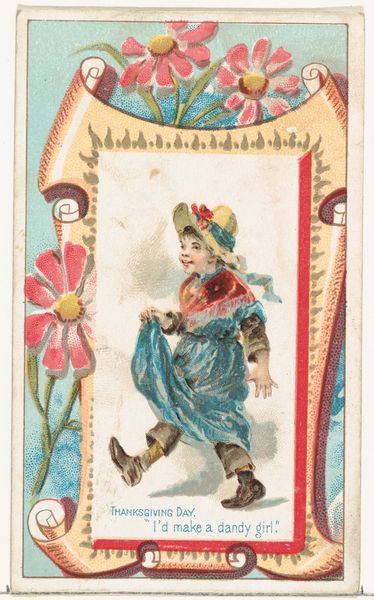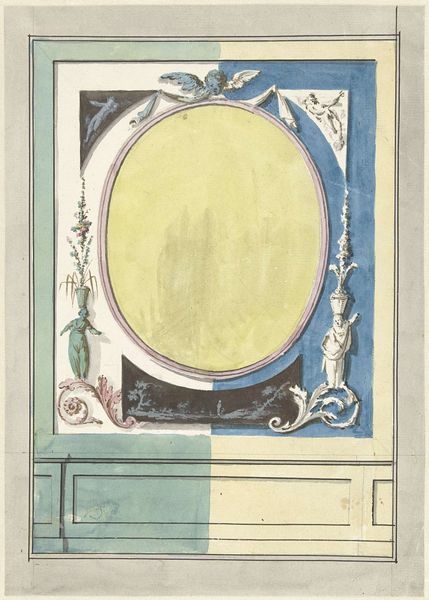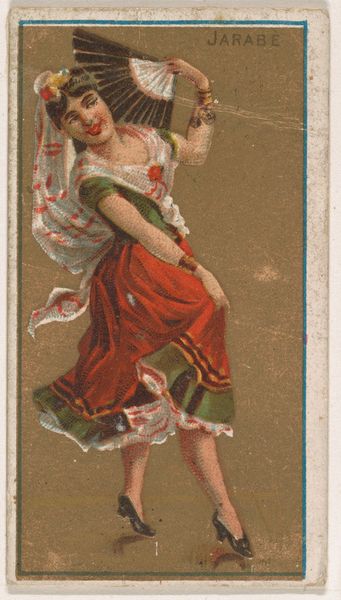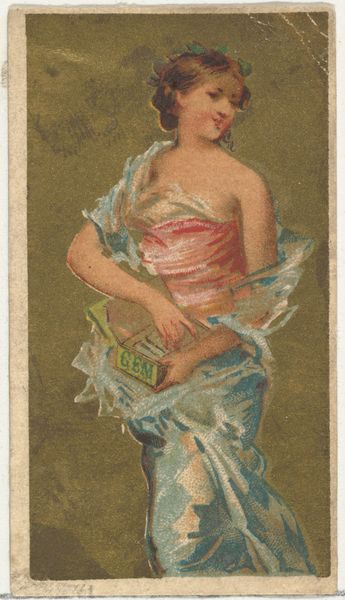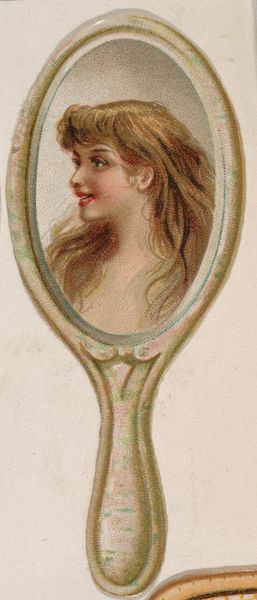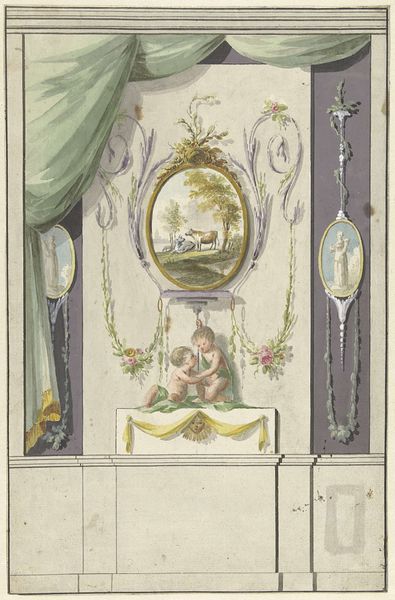
Palanquin, from the Novelties series (N228, Type 3) issued by Kinney Bros. 1889
0:00
0:00
drawing, print
#
portrait
#
drawing
# print
#
figuration
#
decorative-art
#
watercolor
Dimensions: Sheet: 2 7/16 × 1 3/8 in. (6.2 × 3.5 cm)
Copyright: Public Domain
Editor: This is a print from 1889 by the Kinney Brothers Tobacco Company titled "Palanquin, from the Novelties series." It’s currently housed at the Metropolitan Museum of Art. The piece features a rather ornate structure with what appears to be a portrait inside. It's quite decorative, almost like a fancy advertisement. What stands out to you when you look at this? Curator: I'm drawn to the very objectness of it. It’s a tobacco advertisement, meant for mass consumption. It employs drawing and printmaking, merging "high" art techniques with commercial interests. We need to examine the Kinney Brothers' means of production. What materials were used? How was this image circulated? Who consumed these products and how were they targeted in the marketing? Editor: So, you’re focusing on its function as a commodity? Curator: Precisely. This isn’t just a pretty picture. It’s a manufactured image meant to entice consumers. Consider the woman depicted – probably an ideal of beauty at the time, but completely removed from the lives of those involved in the actual growing and processing of the tobacco. Where were the factories located? What were the labor practices involved? Editor: I hadn't considered that disconnect between the image and the reality of its creation. Curator: The fancy aesthetic distracts us. The "novelty" promised is achieved by exploiting cheap labor and propagating a skewed view of society. Notice the palanquin itself is a symbol of luxury and transport. What kind of transport made this advertisement possible and, at what cost? The entire purpose hinges on selling cigarettes to the burgeoning industrial workforce that facilitated its creation. Editor: It's unsettling to think about how luxury goods are promoted while ignoring the exploitation behind them. I see the piece in a very different way now, focusing on labor and consumption, and the materials required to distribute such things. Curator: And questioning traditional assumptions. That is the goal.
Comments
No comments
Be the first to comment and join the conversation on the ultimate creative platform.
